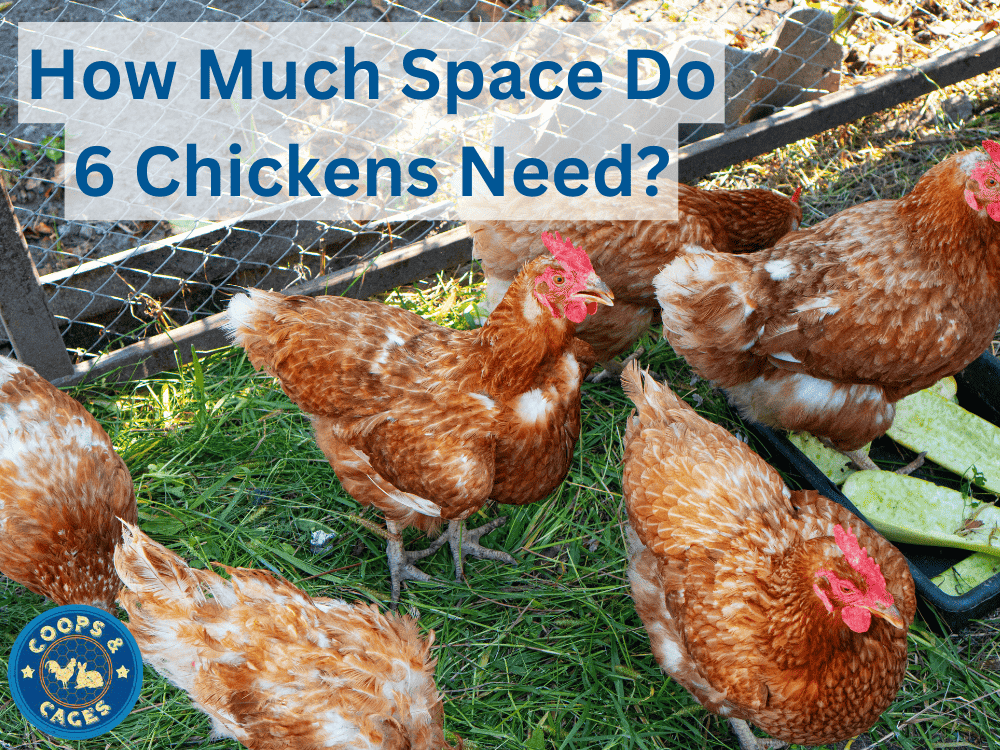Embarking on the journey of raising backyard chickens is an exciting endeavour, but one crucial question often looms large: How much space do your feathery friends truly need to thrive?
Specifically how much space do 6 chickens need to live a good life in your backyard? By the end of this read, you’ll know exactly what coop size they need for night-time comfort and just how big their outdoor run should be.
We’ll also touch on keeping your feathered friends safe yet free to roam, enhancing their house for ultimate hen happiness and even how different-sized chicken coops can impact their health and egg-laying.
Plus, we won’t forget those pesky local laws or seasonal changes that might throw a spanner in the works! Join us as we explore the art and science of just how much space do 6 chickens need!
- Understanding Space Requirements for Backyard Chickens
- The Chicken Coop: A Hen’s Indoor Haven
- Outdoor Access: The Run Area Explained
- How Much Space Do 6 Chickens Need?
- The Impact of Space on Health and Egg Production
- Zoning Laws and Neighbours: Navigating Local Regulations
- Best Coops for 6 Chickens
- Jordan’s Wrap
Understanding Space Requirements for Backyard Chickens
Chickens flourish in environments that mirror their natural habits. It’s vital to strike the right balance between space and safety. When planning your backyard flock, understanding the ideal chicken coop size is crucial to ensure the well-being and comfort of your feathered friends.
Discovering how much room chickens need can guide you in creating a coop space that promotes a healthy and happy environment for your poultry.
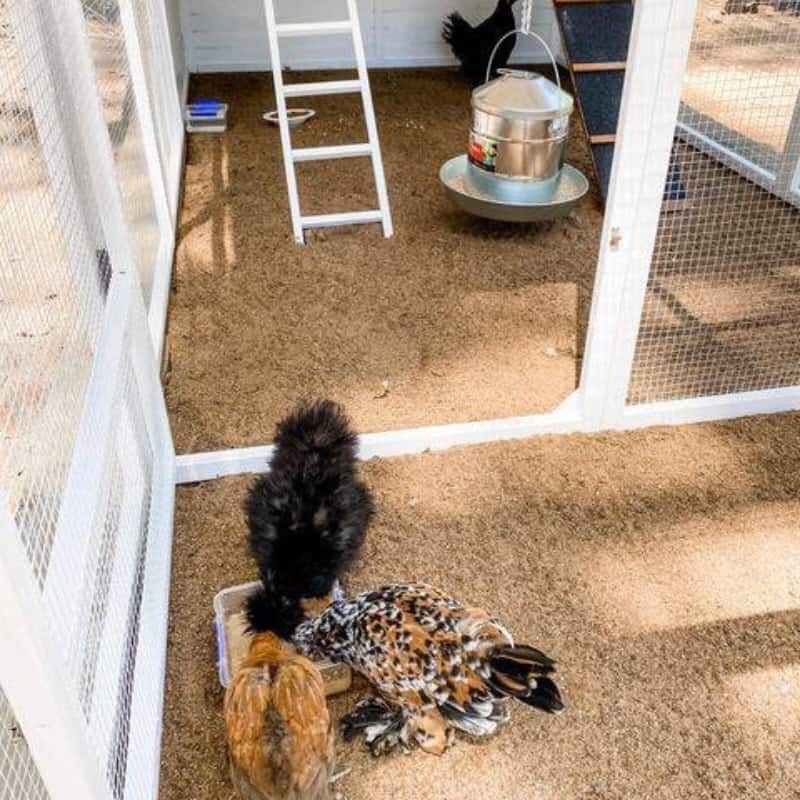
The Chicken Coop: A Hen’s Indoor Haven
When raising chickens, their coop is more than just a place to sleep; it’s essential for their overall well-being. For six chooks, you’ll need a coop that provides ample room not only for comfort but also to establish pecking order without conflict.
A standard rule is about one square metre per chicken inside the chicken coop with about 20 centimetres of perching space per bird. But bigger breeds like Sussex or Plymouth Rocks will appreciate extra space due to their size.
The indoor area should include enough roosting space for all birds and adequate nesting boxes to allow hens privacy when laying eggs which can reduce stress.
To make sure your feathered friends stay happy and healthy, keep these tips in mind: large chicken coops help prevent bad behaviours such as feather pulling; proper spacing between perches lets heavier chicken breeds roost comfortably; and always give them access to fresh water and food within easy reach of every bird.
Outdoor Access: The Run Area Explained
If you’ve got backyard chickens, giving them the right amount of outdoor space is key to their health and happiness.
Think of the run area as a playground for your hens—a place where they can scratch, peck, and socialize under the Aussie sun. Each chicken should have at least 1 square metre in the run to strut comfortably.
But more space is always better as a larger area lets your flock express natural behaviours and reduces stress-related issues like feather picking or aggression.
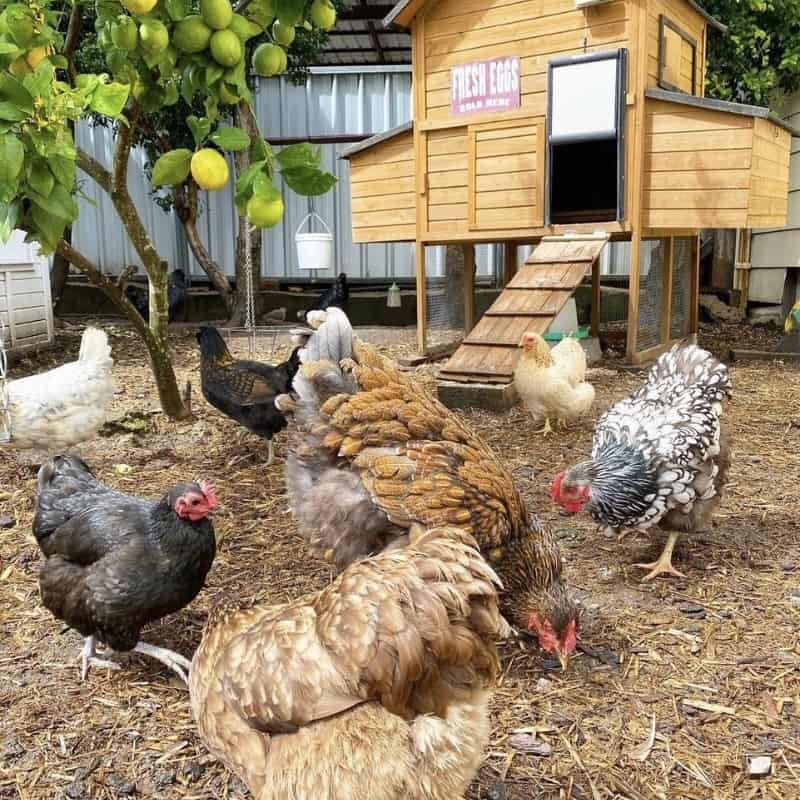
Your run needs sturdy fencing to ward off predators like foxes or snakes—and don’t forget overhead protection from birds of prey.
With Coops And Cages enclosures designed with these threats in mind, you’re already on track to creating an oasis for your feathered mates.
How Much Space Do 6 Chickens Need?
The space requirements for six chickens depend on various factors, including the breed, coop design, and the extent of outdoor access provided.
When determining appropriate coop sizes for 6 chickens, a key step involves calculating coop dimensions to provide ample space for roosting, nesting, and overall comfort for your feathered companions.
As a general guideline, it’s recommended to allocate a minimum of 20 centimetres of perch space per chicken within the coop and at least 1 square metre- or 10 square feet- of outdoor space per chicken in the run or free-range area.
For a flock of six chickens, this would mean at least 120 centimetres of perch area and 6 square metres of run space. This ensures they have ample room to move, roost, and engage in natural behaviours like scratching and dust bathing.
Keep in mind that providing extra space can contribute to the overall well-being and harmony of your flock. Regularly assessing their behaviour and adjusting space accordingly will help ensure a happy and healthy environment for your chickens.
The Impact of Space on Health and Egg Production
Chickens flourish when they have room to roam. Adequate space is vital for their well-being, affecting everything from physical health to egg yield. In cramped conditions, stress levels soar, leading to pecking and other harmful behaviours.
A spacious coop not only lets hens stretch their wings but also reduces the risk of disease spread by providing ample airflow. It’s this combination of indoor comfort and outdoor freedom that contributes to a hen’s overall health.
When it comes to laying eggs, stress-free chickens are more productive. They need calm nesting boxes away from bustling activity; overcrowding can lead them to lay fewer eggs or none at all.
Following these guidelines ensures your feathered friends live happier lives while maintaining consistent egg production for your breakfast table.
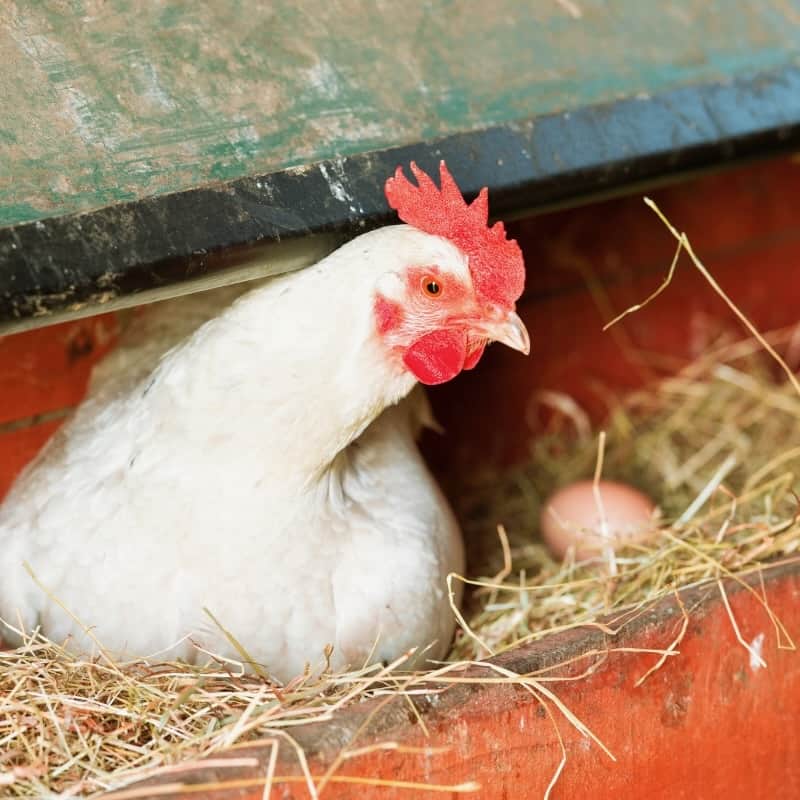
Zoning Laws and Neighbours: Navigating Local Regulations
Keeping chickens in your backyard isn’t just about setting up a coop and letting them roam.
It’s crucial to stay on the right side of local zoning laws. These rules dictate how many chickens you can keep, where you can place your coop, and sometimes even what breeds are allowed.
In my journey with backyard hens here in Australia, I had to dig through council regulations that varied widely between regions. For instance, some areas might limit flock size based on property size or proximity to neighbours’ homes.
And it’s not only about numbers; often there are requirements for noise control measures—like providing soundproofing for roosters—to maintain peace in the neighbourhood.
The key is open communication with those living nearby. Sharing plans before bringing home your chooks can head off any concerns early on. Maybe offer some fresh eggs as a friendly gesture.
Best Coops for 6 Chickens
Mansion Chicken Coop:
Available in two colour options, this Somerzby coop is suitable for up to 6 chickens if let out daily. If you are seeking a more secure option, the Somerzby Deluxe Mansion is an excellent choice.
This variant maintains the same size and design as the Mansion but also features a wire floor and metal flyscreen for added protection against predators.
Majestic Chicken Coop:
This stylish chicken coop from Coops And Cages, with a white, non-toxic stain and black trim, boasts durability with PVC-coated galvanized wire mesh, black latches, and hinges.
Cleaning is a breeze with a large front opening and an extra ground-level door. Equipped with two roosting poles, a stainless steel tray, and a divided nesting box with an opening lid.
Cabana Chicken Coop And Run:
The Cabana offers luxurious accommodations for chickens, featuring two nesting boxes (equivalent to six nesting spaces) and a spacious 2.7-meter run.
Cleaning is made effortless with a pull-out tray and a removable back door. The sturdy frame, made of rot-resistant fir wood, is stylishly accented with a non-toxic charcoal trim.
Castle Chicken Coop:
Featuring an enclosed sleeping area with doors opening from the back, as well as a large fully covered run providing weather protection.
The coop includes a nesting box with three divided nesting spaces, a non-slip ramp with an open-and-shut door at the top, and a solid wood backing under the house area for additional weather protection.
With three perches and a shelf in the run section, it is an efficient housing solution for your chickens.
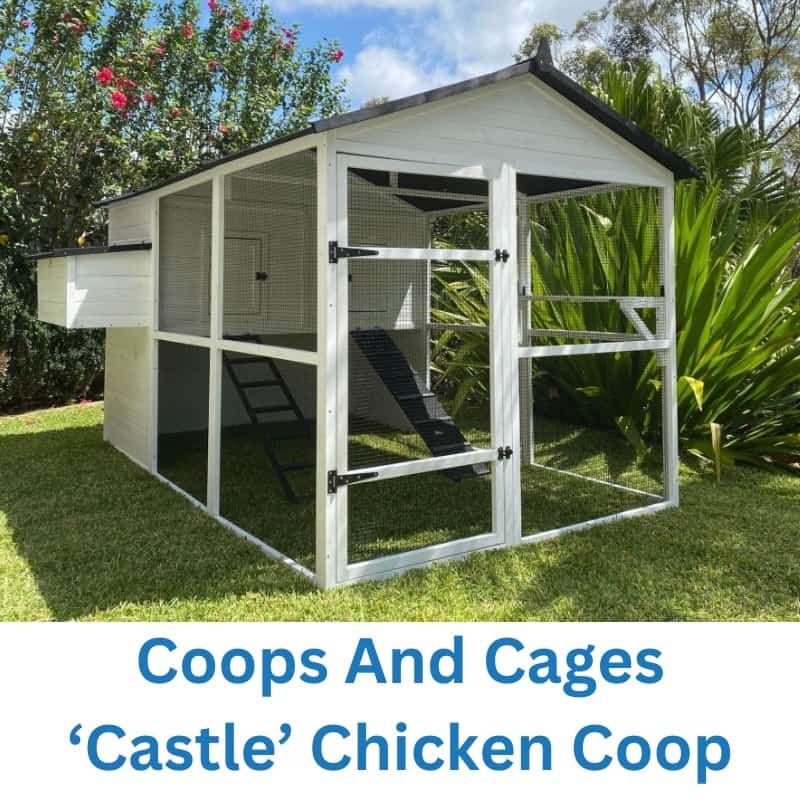
Jordan’s Wrap
Working out how much space do 6 chickens need involves considering factors like proper ventilation, nesting spaces, and protection from the elements.
Providing at least 20cm of perch space and 1 square metre of run area per chicken is crucial, with more run area being preferable if space allows.
Additionally, be sure to check local council regulations regarding keeping chickens in your area.
Customising your coop with features such as easy cleaning mechanisms, durable materials, and enhanced security measures ensures your chickens thrive in a comfortable and compliant environment.



